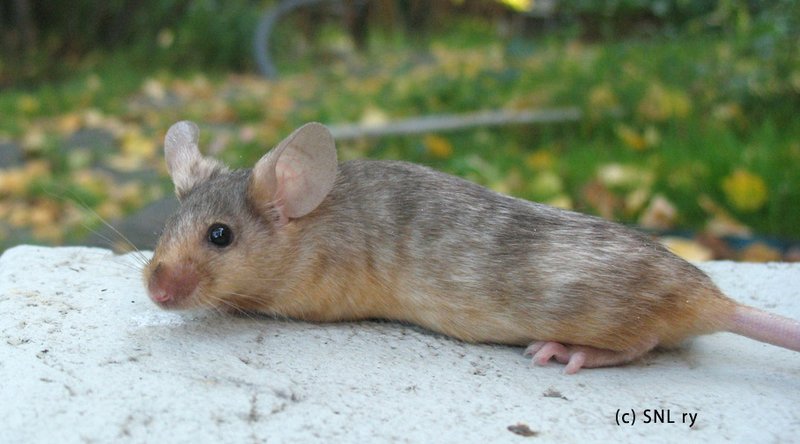
Picture this: a small, vibrant mouse zipping around its cage, its unique brindle coat shimmering under the light. It’s got enough energy to match a toddler on a sugar rush. While that might sound adorable, it’s crucial to dig deeper and understand what it really means to care for a Brindle Mouse. Are they easy to handle, or do they prefer to keep to themselves? Can they provide the companionship you’re looking for, or are they more of a solo act? Let’s explore these questions together.
Understanding the Brindle Mouse
Before we get into the nitty-gritty of being a Brindle Mouse owner, it makes sense to learn what makes them unique. The Brindle Mouse is a domesticated breed known for its distinctive coat pattern, which resembles a blend of brown and tan streaks. This beautiful marking isn’t just for show; it adds to their charm and can make them a visually appealing pet for those who appreciate aesthetics.
These mice are typically small, weighing around 20–40 grams, and they are social creatures. Often found in pairs or small groups, Brindle Mice thrive on companionship—not just with their kind but also with their human caretakers. This means that if you’re considering bringing one into your home, you should think about how you’ll interact with it regularly.
Another important aspect to note is that Brindle Mice are quite active. They love to explore, run, and play, making them a lively addition to any space. Just like a toddler with a new toy, they can be endlessly curious, keeping you entertained as they scurry about.
Pros of Having a Brindle Mouse
If you’re leaning toward adopting a Brindle Mouse, there are some undeniable benefits that come along with it. Here are a few standout reasons why these little critters can be great pets:
- Compact Size: Since they don’t require much space, Brindle Mice are perfect for apartment dwellers or those with limited room. A relatively small cage will suffice, making them easy to accommodate in your home.
- Low Maintenance: Compared to dogs or cats, mice require less daily upkeep. With a quick clean of their cage and some fresh food and water, you’ll keep your pet happy and healthy.
- Social Creatures: They’re friendly and can become quite attached to their owners. If you take the time to handle them gently, you’re likely to build a friendly bond.
- Playful and Entertaining: Watching a Brindle Mouse play can be hours of fun. Their antics, whether it’s running on a wheel or exploring their cage, are sure to keep you amused.
With these benefits in mind, it’s easy to see why many people consider the Brindle Mouse a good pet choice. But, hang on a second! Before you rush out to adopt, let’s not forget to weigh the downsides as well.
Cons of Having a Brindle Mouse
Now, every pet comes with its own set of challenges, and Brindle Mice are no exception. Here’s a list of some potential cons to consider before making the leap:
- Short Lifespan: On average, Brindle Mice live about 2 to 3 years. This can be tough for pet owners looking for a long-term companion, as you’ll have to face the sadness of loss sooner than with larger pets.
- Escape Artists: Mice are notorious for finding ways to escape their cages. If you don’t have a secure setup, you might find your little friend wandering around your home, which can be both frustrating and dangerous.
- High Energy: While their playful nature is entertaining, it might also be exhausting. Brindle Mice need a lot of stimulation, and if neglected, they can become bored and engage in destructive behaviors.
- Messy Habits: Mice can be messy pets; they tend to scatter bedding and food around their cages. Regular cleaning is a must to keep odors at bay and maintain a healthy environment.
With these cons in mind, it’s clear that while Brindle Mice can be delightful companions, they also require commitment and care. You might be wondering if you’re ready to take on these responsibilities.
Are Brindle Mice Friendly? Understanding Their Temperament
One of the biggest draws of owning a pet is the companionship they provide. When it comes to Brindle Mice, their friendly temperament can be a highlight. These little guys often enjoy interacting with humans, making them a more engaging choice than pets that prefer solitude.
Brindle Mice are generally not aggressive. Instead, they display an inquisitive nature, often coming to the front of their cage when they see you approaching. This can feel quite rewarding, as they seem eager to interact. However, it’s essential to handle them with care and give them time to adjust to your presence.
Building trust takes time. For example, try slowly introducing your hand into their space. Allow them to sniff you before attempting to hold them. Over time, many owners report that their Brindle Mice become quite social and will even seek out attention. Just be sure to supervise playtime outside the cage to prevent any quick escapes!
Cage Setup and Environment
Setting up a suitable environment is crucial for your Brindle Mouse’s well-being. A clean, safe, and stimulating cage can make all the difference in their happiness. Here are some important considerations:
1. Cage Size and Type: A multi-level cage provides not only enough space for your mouse to move but also opportunities for climbing and exploring. Make sure it has horizontal bars for climbing and a solid bottom to prevent injuries.
2. Bedding and Nesting: Use safe bedding like aspen shavings or paper-based products. Avoid cedar or pine, as they can be harmful to their health. Providing nesting material helps them feel secure.
3. Enrichment: Mice are intelligent and need mental stimulation. Add tunnels, small toys, or chew items to keep them engaged. You could even create a mini obstacle course to encourage exercise.
4. Hiding Places: Brindle Mice love to have places to hide and feel secure. Adding small boxes or tubes will make them feel safe and less stressed in their environment.
With the right setup, you can create a thriving habitat for your Brindle Mouse, helping them feel right at home.
Feeding Your Brindle Mouse
Nourishing your Brindle Mouse properly is vital for their health and happiness. Here’s a breakdown of what you should know about their diet:
1. Pelleted Diet: A high-quality pelleted mouse food serves as a good staple. Look for options that include a balanced mix of nutrients.
2. Fresh Fruits and Veggies: You can occasionally offer small pieces of fresh fruits and vegetables. Carrots, apples, and broccoli are usually safe choices. Just remember to introduce new foods slowly.
3. Chewing Options: Mice have continuously growing teeth, so providing chew toys or treats can help keep their teeth from overgrowing.
4. Fresh Water: Always ensure your mouse has access to clean, fresh water. You can use a small water bottle with a sipper tube to keep it clean and prevent spills.
It’s essential to monitor their diet closely. Overfeeding or feeding the wrong items can lead to health issues, so keeping track of what they eat and how much is a good practice.
Is a Brindle Mouse Right for You?
Now that we’ve covered the pros and cons, it’s time to reflect on whether a Brindle Mouse is the right match for you. Consider your lifestyle, your living environment, and how much time you can dedicate to a pet.
If you’re looking for a small, active, and playful companion and can commit to their needs, a Brindle Mouse may just be the perfect pet for you. However, if you want a pet that provides a more long-term bond, or if a low-maintenance animal is a priority, you might want to look into other options.
Ultimately, the joy these little creatures can bring into your life can be worth the effort. Just like any pet, they require love, care, and attention to thrive.
In the end, owning a Brindle Mouse can be rewarding, providing endless amusement with their antics. By weighing the pros and cons and understanding what it means to care for them, you’ll be better equipped to make an informed decision. Whether you choose to welcome a Brindle Mouse into your home or not, it’s all about finding the pet that fits your lifestyle best.

